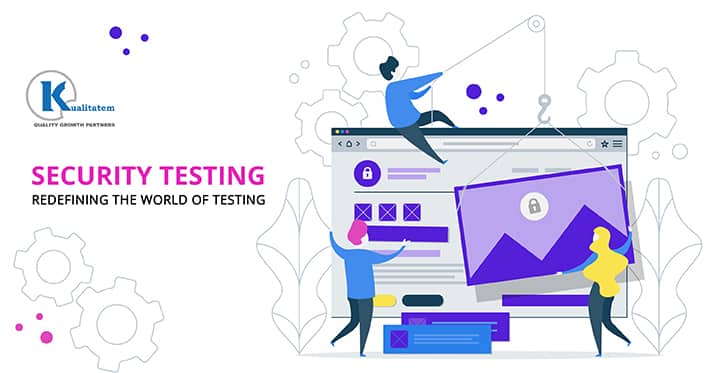Security Testing – Redefining The World of Testing

- May 22, 2019
- HibaSulaiman
Security testing is one of the most interesting branches of software testing. To perform security testing, the tester requires the necessary software architecture knowledge and sufficient experience to perform it. One needs to have really good analytical skills and an out of the box mindset. The world is changing rapidly and a common man uses 9 to 10 applications on a daily basis. Imagine this number growing exponentially in a few years given the rapid technological advancement we are witnessing today.
Security testing is redefining the world of testing. There are many notable trends that are affecting the industry today:
- The Growth of Financial and Non-financial Sector: Thousands of web and mobile applications are being developed to coupe up or step ahead of the traditional methods of capturing meaningful data. Moreover, these efforts are also being made to perform the transactions for the ease of end-customer in a single click.
- The Rise of DevOps and Agile: Adoption in the DevOps and Agile era will continue to grow. In the near future in 2020, 90% of the companies will adopt these changes. Therefore, testers must learn new skills and know how to adapt to new and upcoming software development processes and methodologies.
- Paradigm Shift from Manual to Automated Testing: With growing cybercrimes are growing more and more multinational banks and financial institutions feel unsafe. To ensure cyber safety one has to follow simple practices. All you need to do is, understand the workflow of the end-to-end scenario, find the vulnerable areas and automate the test cases.
- Internet of Things (IoT) is now pervading with wearable tech devices: Hyperconnectivity is taking over the world and the number of devices by 2025 is predicted to be 1 trillion. Big organizations are facing many challenges as technology is rapidly evolving and the digital economy is continuously growing. Developing the right tools and adopting the new trends and processes will help them to stay competitive and on top of their game
- Shift Right and Shift Left: Neither shift right or shift left are new trends or terminologies in software testing. But a combination of both of these approaches seems to work for many organizations. Shift left the focus on quality much earlier in the design phase to prevent than to detect. It is used to design a flawless model for faster development while shift right focuses on the testing in production. The emphasis must be on both shift left (to enable early and continuous testing) and shift right (to address security and user experience issues).
Owing to the huge amount of data stored in web applications and an increase in the number of transactions on the web, proper security testing of web applications is becoming a very important day by day. To perform security testing, one should be familiar with vulnerability, URL manipulation, SQL injection, cross-site scripting, spoofing, and password cracking.
Conclusion:
There are countless ways to break an application. And security testing itself is not the only measure of how secure an application is. But it is highly recommended that security testing is included as part of the standard software development and testing process. Security testing is playing a key role in finding vulnerabilities and to check whether confidential data remains confidential. In security testing, testers play the role of attacker and get along with the system to find the security-related issues.











